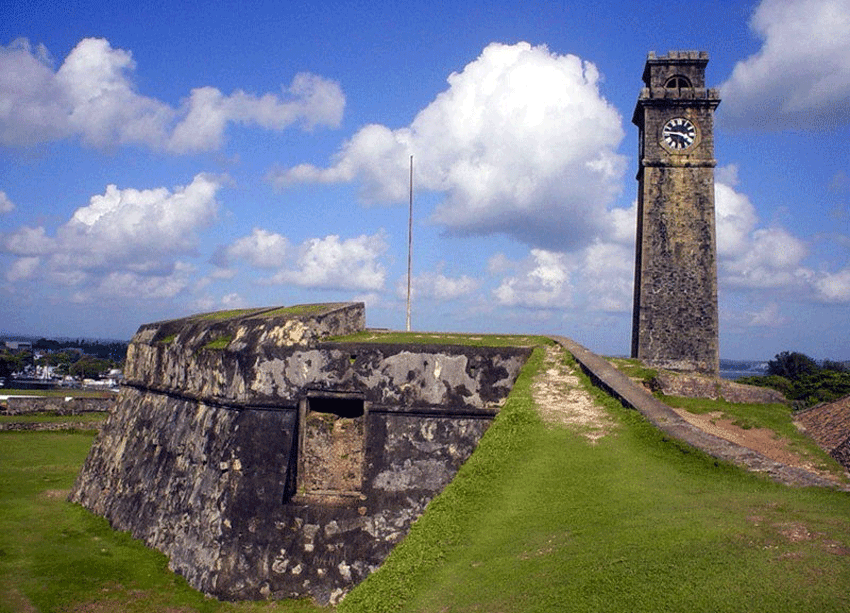
![]() Like an enclave surrounded by a long string of beaches bordered by coconut trees, the fort of Galle occupies a special place in the landscape of Sri Lanka. The old city of Galle is in fact the only fully-preserved witness to four centuries of successive colonial rule of the island, making it a veritable open-air museum.
Like an enclave surrounded by a long string of beaches bordered by coconut trees, the fort of Galle occupies a special place in the landscape of Sri Lanka. The old city of Galle is in fact the only fully-preserved witness to four centuries of successive colonial rule of the island, making it a veritable open-air museum.
The origins of the city are full of mysteries. We generally attribute the name of the city to the Portuguese, who would have come up with Galle upon hearing a cock (galo in Portuguese) singing. But Galle could also originate from gala, meaning rock in Sinhalese, which might refer to the rocky headland on which the Fort was constructed. Even if the Portuguese had begun constructing the fort in the16th century, a number of ancient texts refer to Galle well before that, as a commercial hub for trading spices, elephants, precious stones or ivories to Arab, Mediterranean, and Chinese traders.
After driving out the Portuguese in 1640, the Dutch rebuilt and developed the fort of Galle as we know it today. They made Galle the main port of Sri Lanka for more than 200 years, with the help of local workers who were more than happy to get rid of the old occupant. The British, who succeeded the Dutch in this domination dance, chose Colombo as the new location of the main port, considering it safer for their ships.
![]()
The peaceful and charming roads of Galle bear witness not only to the colonial past of Sri Lanka, but also to its religious and cultural mixing, through its architecture, food, and the diversity of the places of worship. Churches, mosques, and temples cohabit in the limited space of the Fort. Today, although many old Dutch buildings have been transformed into shops, retaurants, and hotels, the classificaion of the city as a UNESCO World Heritage Site has enabled the preservation of the facades of Galle, bringing to life the old world.
At sunset, when the heat of the day eases, many Sri Lankan families head to the friendly atmostphere of the ramparts, to stroll, picnic, and to go to the sea. There are many points of interest while taking a stroll in the fort of Galle, from the Dutch reformed Church constructed in 1640, to the old hospital that today houses shops, bars, and restaurants, the New Orient Hotel, the lighthouse of Galle, the clock tower, or the large square with its amazing banyan trees while passing through the whitewashed Meera Mosque. But above all, while walking through the cobblestone streets of Galle, the simple pleasure is in being taken away by the unique atmosphere, in the shades of walls marked by time and sea spray.
The beautiful beach of Unawatuna where many travellers stay, more so than in Galle, is only 6 km south of the city center.
![]()






